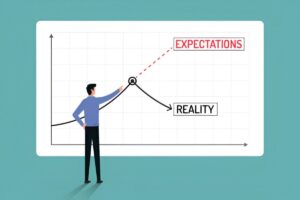Zero-coupon bonds are one of the most intriguing financial instruments...
Read MoreLatest
Understanding Yield Curve Theory: A Comprehensive Guide
As someone deeply immersed in the world of finance and...
Read MoreYes Theory Financial: Embracing Uncertainty in Personal Finance and Investing
As someone deeply immersed in the world of finance and...
Read MoreYale Financial Theory: A Deep Dive into Modern Portfolio Management
As someone deeply immersed in the world of finance and...
Read MoreWilliam Scott’s Financial Accounting Theory: A Comprehensive Exploration
Financial accounting theory is a cornerstone of modern business practices,...
Read MoreUnderstanding Financial Accounting Theory: A Deep Dive into William R.
Financial accounting theory is a cornerstone of modern accounting practices,...
Read MoreUnderstanding Wiley Financial Accounting Theory: A Comprehensive Guide
As someone deeply immersed in the world of finance and...
Read MoreUnderstanding Expectation Theory: A Financial Analyst’s Guide
As a financial analyst, I often find myself navigating the...
Read MoreInvestment
Are Leasehold Properties a Good Investment? A Comprehensive Guide to
Investing in real estate is often viewed as a solid...
Read MoreAre LEAPS a Good Investment? A Deep Dive into Long-Term
When I first encountered LEAPS, or Long-Term Equity Anticipation Securities,...
Read MoreAre Laundromats a Good Investment? A Comprehensive Guide
Investing in laundromats is something I have given a great...
Read MoreAre Large Cap Stocks a Good Investment? An In-Depth Exploration
Investing in large-cap stocks has long been considered a safe...
Read MoreIs the Land Rover Defender a Good Investment? A Comprehensive
When I think about investments, I usually picture stocks, bonds,...
Read MoreAre Lake Houses a Good Investment? A Comprehensive Guide
When I first started considering the idea of investing in...
Read MoreAre Lab-Created Diamonds a Good Investment?
When considering investing in diamonds, I know it’s crucial to...
Read MoreAre Krugerrands a Good Investment? A Comprehensive Look
As an investor, I’ve always been on the lookout for...
Read MoreStock Trading
Best Low-Cost Day Trading Stocks: A Practical Guide
Day trading requires stocks that move quickly, trade in large...
Read MoreBest Liquid Stocks for Intraday Trading: A Practical
Introduction Intraday trading requires stocks that are highly liquid, have...
Read MoreBest Large-Cap Stocks for Day Trading
Day trading large-cap stocks offers liquidity, price stability, and reduced...
Read MoreBest Indicators for Swing Trading Stocks: A Practical
Swing trading requires a solid understanding of market indicators. In...
Read MoreBest Indicator for Intraday Stock Trading
Intraday trading requires precision, quick decision-making, and a solid understanding...
Read MoreThe Best Global Stock Trading Platforms: A Comprehensive
Introduction Finding the best global stock trading platform can be...
Read MoreBest Games to Learn Stock Trading: A Practical
Introduction Stock trading can seem overwhelming. The financial jargon, the...
Read MoreThe Best Gadgets for Stock Trading: A Practical
As a trader, I’ve learned over the years that the...
Read MoreCryptocurrencies
A Practical Guide to the Best Stock Scanners
As a day trader, I’ve learned that having the right...
Read MoreUnderstanding Stock Trading Discord Servers: A Comprehensive Guide
Stock trading has become more accessible to everyday individuals, thanks...
Read MoreUnderstanding the Average Rate of Return in Cryptocurrency:
Cryptocurrency has gained significant attention over the past few years....
Read MoreUnderstanding AVAX Cryptocurrency: A Comprehensive Guide
Cryptocurrency has taken the world by storm, with thousands of...
Read MoreThe Ava Cryptocurrency: A Comprehensive Overview
Cryptocurrencies have taken the financial world by storm, providing new...
Read MoreExploring AutoTrader Cryptocurrency: A Comprehensive Guide
Cryptocurrency has rapidly evolved from a niche digital curiosity into...
Read MoreA Comprehensive Guide to Aurora Cryptocurrency: Understanding Its
In the world of cryptocurrencies, new projects are constantly emerging...
Read MoreUnderstanding ATT Cryptocurrency: A Detailed Guide to Its
Cryptocurrencies have become a significant part of the financial landscape...
Read More














